Wireless
Momentum Builds for 3.5 GHz Mobility in 2018
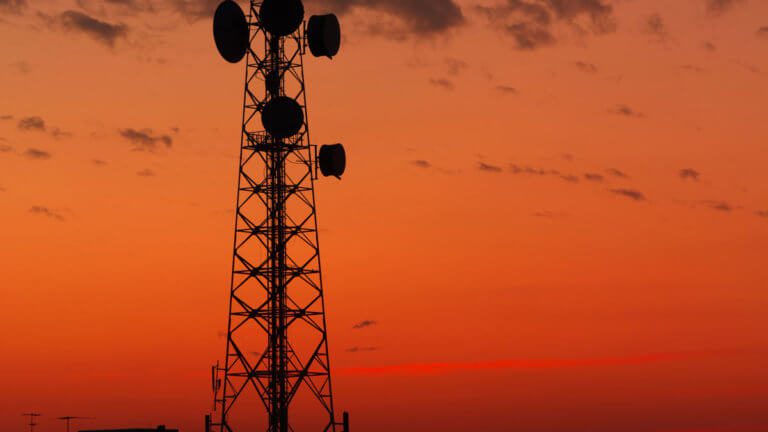
What is the 3.5 GHz Citizens Broadband Radio Service?
Last year, the U.S. allocated 150 MHz of spectrum for fixed and mobile broadband use under the newly-created Citizens Broadband Radio Service (CBRS) in the 3550-3700 MHz band. To put 150 MHz of bandwidth into perspective, this is roughly equivalent to the total spectrum that each of the Big 4 U.S. wireless operators have licensed to date. With 10 MHz channels, this is ideal for LTE TDD and small cells with transmitter powers of 1W/10 MHz EIRP for indoor use and as high as 50W/10 MHz EIRP in rural locations. This is great for MSOs who have the key locations, backhaul and power where people use data, either inside buildings or outside via their external cable infrastructure. For example, in metro areas, MSOs can place 10W/10MHz EIRP small cells on cable strands for great coverage. It is the first time that fixed operators will be allowed to use LTE in unlicensed spectrum.
CBRS is the world’s first three-tier spectrum sharing framework in which one or more Spectrum Access Systems (SASs) will actively manage 1) incumbents, 2) priority access licensed (PAL) users, and 3) general authorized access (GAA) users. Basically, the SAS will tell the Access Points, called CBRS Devices (CBRDs), which channels to use to avoid interference to other users in a given geographical area. CBRS contains both licensed spectrum, with seven PAL channels, and unlicensed spectrum, with eight GAA channels, in over 73K census tract areas across the US. The PAL license period is three years with an initial right to renew for a further three years. In areas where the auction for PAL is unsuccessful, all this spectrum becomes available as unlicensed (GAA).
Incumbents in the band include shipborne radars operated by the Department of Defense and receive-only fixed-satellite service earth stations. Wireless Internet Service Providers (WISPs), utilities, and other terrestrial users currently in the 3650-3700 MHz segment are required to transition from 50 MHz of spectrum to 150 MHz of CBRS. The main issue for use of 3.5 GHz in the coastal regions of the U.S. is the detection of shipborne radars used by approximately 30 U.S. naval carriers. However, these ships are normally stationed globally. To detect the arrival of one of these ships on either the East or West coasts of the U.S. requires building an Environmental Sensing Capacity (ESC) – a radar detection network. The ESC will inform the SAS which channels the radar is located on in a given area so that current users are moved to adjacent channels. Normally, the radars will only occupy one or two channels over a relativity small geographical area containing the current location of the ship. The rest of the spectrum is available to all.
Momentum for 3.5 GHz
The U.S. wide commercial timeline for 3.5 GHz use is dictated by the availability of the SASs, ESCs, commercial grade network equipment, and capable end-user devices. The recent Mobile World Congress (MWC 2017) in Barcelona, Spain showcased the status of many of these time critical components. CableLabs hosted its own workshop there, inviting several of the key players in the 3.5 GHz space. Many companies on the show floor demonstrated their readiness for 3.5 GHz.
Of course, the guarantee of success is not only the availability of technology but also the willingness of key players to adopt and bring consensus support for the opportunity - particularly for a U.S. specific band where wide adoption is key. In particular, this is key for the most important component of the technology – the smart phone. Recently, Verizon committed to 3.5 GHz in an interview with FierceWireless.
Equally, T-Mobile, Sprint and AT&T are eyeing LTE deployment in the 3.5 GHz band. All four of the US mobile network operators are members of the CBRS Alliance which is driving the LTE TDD use of this band for mobile. CableLabs was one of the first organizations to join to help set the direction of CBRS for our members. Charter and Comcast are now also members bringing key MSO support.
The collection of these mobile operators and the larger MSOs with interest in 3.5 GHz will help create the interest among the tier one handset vendors, such as Apple and Samsung, to support this band. Actually, at MWC 2017, Sony has already announced the support of band 42 in their new handset for Asia which supports the first 50 MHz of the CBRS band. One terminal research web site, The Global Mobile Suppliers Association (gsacom.com), claims that the new Samsung Galaxy 8 in April will also support band 42 at its launch. This is compelling since it means the engineering “tweaking” of the handset antennas has largely been solved. Beside these antennas, the silicon support of 3.5 GHz has already been achieved by Qualcomm in their latest Snapdragon modem released in October of last year. All of this bodes well for 2018 and handset support of the new CBRS band 48.
Outside the key handset issue, it is expected that the SASs and ESCs will be up and running at the end of 2017, promising full spectrum availability across the U.S. in 2018. The PAL auctions are expected towards the middle to end of 2018, but in the meantime operators will have access to all the spectrum as GAA.
Again, there was no shortage at MWC 2017 of the availability of Access Points (CBRDs) both for indoor and external use from the likes of AirSpan, Accelleran, Juni, Nokia and Sercom. And, I am sure I missed others there as well.
On the SAS side, Federated Wireless and Google are probably the leading SAS providers at the moment. However, besides Federated and Google, other WinnForum members which were successful in gaining licenses from the FCC in the first phase include Amdocs, Comsearch, CTIA, Keybridge and Sony. The WinnForum is driving the standards for the SAS and SAS to SAS interconnections. Again, here CableLabs is also a member.
Customer Propositions
BGR found last year that the average speed of LTE in the U.S. was only 10 Mbps, placing us at number 55 in the World with Singapore at number one with an average speed of 37 Mbps according to OpenSignal’s data. Here the customers needs are met by external macro-cellular networks which lose speed as they pass thru walls. However, locating small cells inside buildings, where 80% of mobile data is consumed today, can offer speeds as high as 570 Mbps if all of the GAA spectrum (80 MHz) is used with 4x4 MIMO. Even with access to just two channels, 20 MHz, this will offer 7 times faster than the average LTE network here according to CableLabs testing with 2x2 MIMO. But why stop there? We can aggregate 3.5 GHz and WiFi to reach a potential 1.4 Gbps.
CableLabs’ UpRamp Fiterator® has already identified one company, Trinity Mobile Networks, which uses Multipath TCP to aggregate both WiFi and Macro cell LTE networks to combine the speed of both. While in 2015, SK Telecom in Korea launched “Giga cells” which combines their WiFi network with LTE to reach 1.17 Gbps speeds in Android phones.
And Finally, One Last Thought
3.5 GHz offers the potential for US operators to offer 5G connection speeds years before 5G! All of this bodes well for an exciting 2018 for 3.5 GHz and for our members to take advantage of this spectrum for both mobile and fixed plays. Remember everything is wireless and wireless is everything!
Wireless
3.5 GHz: The Democratization of LTE
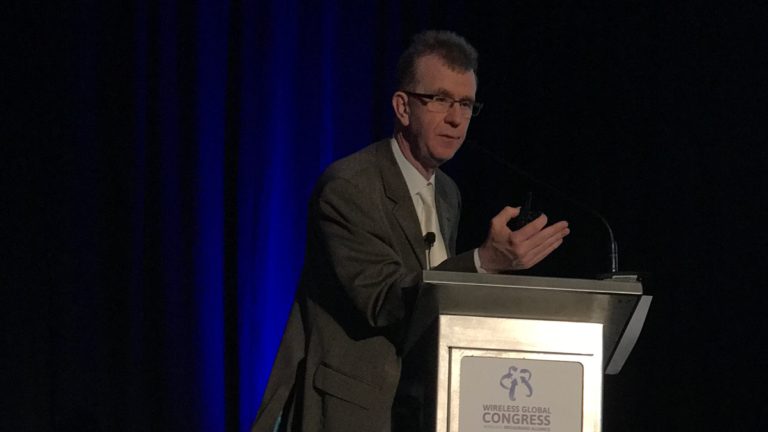

Video Courtesy of Converge! Network Digest
The Wireless Broadband Alliance organizes Wireless Global Congress which was held November 14 – 17 in San Jose, CA. As one of the world’s leading wireless events, more than 700 attendees and over 60 speakers and panelists attended.
The main theme for this year’s conference program was “Innovation and Convergence.” The wireless industry is truly at a crossroads with the coexistence and convergence of licensed and unlicensed spectrum. I presented a paper titled “3.5 GHz – The Democratization of LTE” in the session on “Convergence and Coordinated Shared Spectrum Solution” with Neville Meijers, VP of Small Cells, Qualcomm who presented his paper on “Harmonious Integration of Unlicensed and Licensed Spectrum." Both presentations addressed the new opportunities in unlicensed spectrum with LTE based technologies using either LTE TDD or MuLTEfire.
My presentation addressed an exciting development here in the USA where the U.S. Federal Communications Commission has opened up 150 MHz of spectrum for shared use by commercial entities in the 3.5 GHz band (specifically 3.55-3.7 GHz). The innovative shared spectrum model adopted by the FCC for the Citizens Broadband Radio Service (CBRS) constitutes a bold and historic shift in spectrum allocation.
There will be 15 ten megahertz-wide channels available at a granular census tract geography across the United States suitable for LTE time division duplex (TDD) and other technologies such as MuLTEfire and License Assist Access (LAA). Perhaps more importantly, this frequency range is defined in the mobile standards by 3GPP for mobile use.
CBRS represents the first opportunity for the democratization of LTE for cable operators and other fixed operators for new innovative applications. Unlike spectrum for mobile networks which can be used to cover very wide areas, CBRS is designed for small cells in both inside and outside locations. Additionally, the use of LTE TDD avoids the need for a macro-cell anchor of cells as all the signaling is contained within the band. Effectively, LTE technology becomes available for fixed operators for the first time. The frequency for CBRS covers bands 42 and 43 of the 3GPP mobile bands and is expected to be available in smart phones within the next two years and offers exciting opportunities.
Recently, CableLabs joined the CBRS Alliance to evangelize LTE-based CBRS technology, use cases and business opportunities for our members. The CBRS Alliance believes that LTE-based solutions in the CBRS band, utilizing shared spectrum, can enable both in-building and outdoor coverage and capacity expansion at massive scale. In order to maximize CBRS’s full potential, the CBRS Alliance aims to enable a robust ecosystem towards making LTE-based CBRS solutions available.
News
CableLabs Joins the CBRS Alliance

On April 28, the FCC finalized its rules for the Citizens’ Broadband Radio Service (CBRS), opening 150 MHz of spectrum for shared use by commercial entities in the 3.5 GHz band (3.55-3.7 GHz). There will be 15 ten megahertz-wide (MHz) channels available at a granular census tract geography across the United States, suitable for LTE time division duplex (TDD). 80 MHz is reserved for unlicensed use and the other 70 MHz can be subject to an auction for licensed periods of three years. Should that not happen for lack of interest at that time then 150 MHz is available for unlicensed use until another opportunity for an auction in a year’s time. This represents the first opportunity for the democratization of LTE for new innovative applications. Unlike spectrum for mobile networks which can be used to cover very wide areas, CBRS is designed for small cells in both inside and outside locations.
CableLabs has joined the CBRS Alliance founded by Google, Qualcomm, Intel, Nokia, Ruckus and Federated wireless to evangelize LTE-based CBRS technology, use cases and business opportunities for our members. We plan to help drive the technology developments necessary to fulfill our mission. The Alliance will also establish an effective product certification program for LTE equipment in the US 3.5 GHz band ensuring multi-vendor interoperability. Kyrio, a fully owned subsidiary of CableLabs, will evaluate the expansion of its current testing services to support the CBRS program.
The CBRS Alliance believes that LTE-based solutions in the CBRS band, utilizing shared spectrum, can enable both in-building and outdoor coverage and capacity expansion at massive scale. For example, cable operators could deploy small cells in their customers’ homes to capture mobile data where it is used at much faster speeds than external LTE networks with owner economics. Outside small cells with higher transmit powers could cover busy streets and similar areas.
In order to maximize CBRS’s full potential, the CBRS Alliance aims to enable a robust ecosystem towards making LTE-based CBRS solutions available.
The innovative shared spectrum model adopted by the U.S. Federal Communications Commission for the Citizens Broadband Radio Service (CBRS) constitutes a bold and historic shift in spectrum allocation.
For more information, see the CBRS Alliance web site.
Innovation
CableLabs Joins the UK 5G Innovation Centre
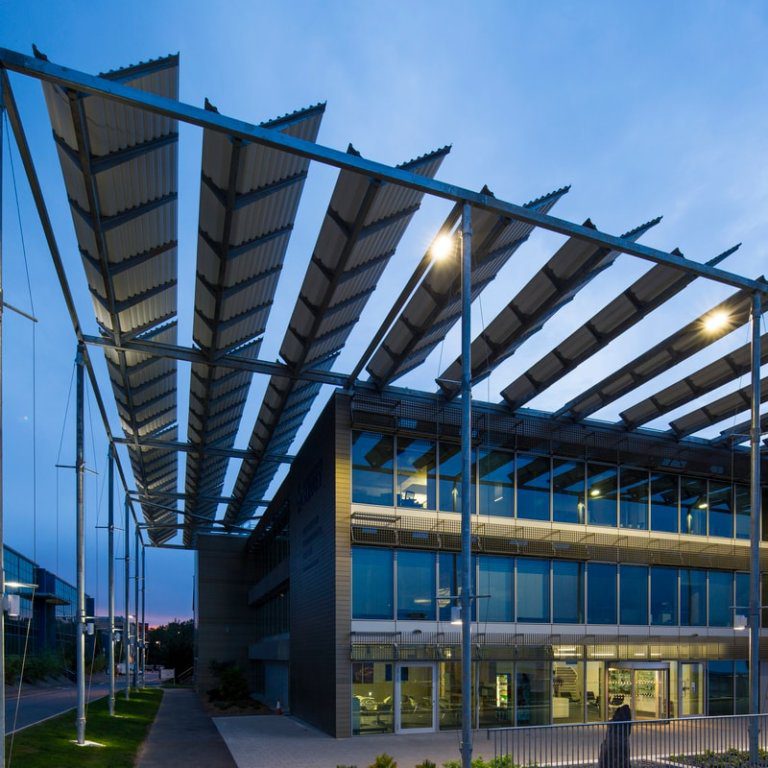
Why is 5G important? 5G, the next generation of mobile communication technology, will redefine communications services and their associated networks over the next five to fifteen years. Whereas the emphasis in the media at the moment focuses very much around the potential for Gbps radio services in the Millimeter frequency bands (mm-wave), one of the most intriguing aspects of the 5G goals is a target of one millisecond of latency for real time network control. This alone would have profound implications for the way that networks are designed and where the content resides. After all, there is no getting around the speed of light. New applications and services will be found for ultra low latency such as augmented reality with haptic feedback in real time, network control of robots and driverless cars.
The mm-wave small cells which will support multi-Gbps services will do so over distances of up to only a few hundred metres at the most. These small cells will require deep dense fibre networks. Therefore, I believe the combination of both mm-wave small cells and low latency will drive the agenda for fixed mobile convergence to be known as 5G. The cable industry is ideally placed here because of its asset position and its continuing deployment of higher and higher speed backhaul as well as its access to content.

Why academic research?
CableLabs has increased its focus on innovation in 2016 by putting several supporting programs in place. Under the leadership of Ike Elliott and Ron Reuss, we have doubled our funding of academic outreach focused on centres of excellence. As a key part of the academic program is 5G, we are supporters of NYU Wireless, under the leadership of Professor Ted Rappaport, which has pioneered the cellular use of mm-wave bands with the development of the associated channel model. This is helping to drive our 5G research, under Belal Hamzeh, in the analysis of the threats and opportunities for the mm-wave wireless local loop. However, because there is more to 5G than the importance of mm-wave, this drove us to join the United Kingdom’s 5G Innovation Centre co-located at The University of Surrey.
UK 5G innovation Centre
The 5G Innovation Centre is one of the world’s leading centres of excellence in 5G and the UK’s largest academic research centre dedicated to the development of next generation mobile and wireless communications. It brings together leading academic expertise and key industry partners in a shared vision. The 5G IC houses 170 researchers and at its heart is a state of the art testbed for trialling emerging 5G ideas.
It is very difficult to cover here all their research activities so just let me give you a taste of their 5G Vision. There is a considerable amount of research into the air interface below 6 GHz to grow both the speed and capacity by 10x. Already some of their research here is likely to find its way into 3GPP - the mobile standards organization. However, at the heart of 5G is content. Current IP protocols are rapidly becoming obsolete since they were designed for a world where communications were point to point oriented. Today, the internet focuses on the distribution and storage of content. To achieve 1mS latency and to improve the associated Quality of Experience, 5G networks will proactively move content closer to the user based on predictive algorithms. Already the 5G IC has shown success rates of 95% in this approach. Associated with this is a movement away from IP to perhaps Information-centric networking (ICN). This is an approach to evolve the Internet infrastructure away from a host-centric paradigm based on perpetual connectivity and end-to-end communications to a network architecture in which the focal point is “named information” (or content or data). These ideas will be at the heart of all networks in the next five to fifteen years. All of these are very active areas of research at 5G IC and CableLabs.
As part of our 5G IC membership, we will sponsor a PhD student while gaining access to the whole output of the centre. We have already identified several areas of interest to cable system operators for the PhD Student such as the use of shared spectrum in both licensed and unlicensed bands or software defined networks for 5G cores. Key to our success in our association with the 5G IC, CableLabs will be working closely in a partnership gaining access to world class academic researchers as well as contribution to the industry consensus on 5G.
News
Please Join CableLabs at Inform[ED]™ Wireless
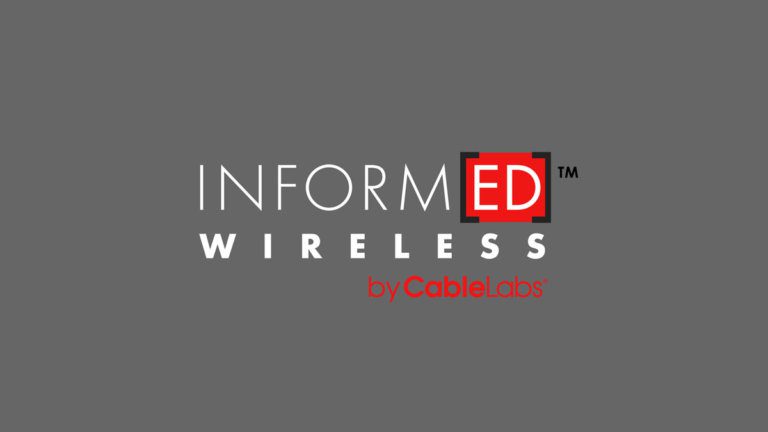
The cable industry has been playing an increasing role in advancing wireless technologies as fixed and mobile networks are converging. Today the cable industry provides wireless customers with the largest footprint of wireless hotspots in an environment of increasing mobility as well as providing backhaul connections to mobile operator cell sites. To meet the predicted 1000x increase in wireless data over the next 10-12 years, it is expected that a large part of this will be achieved by small cell deployments inside homes and offices on cable. There are opportunities for the cable and wireless technologists to collaborate on technologies such as 5G, WiFi and small cells to deliver an improved customer experience in the future.
CableLabs is hosting its first-ever Inform[ED] Wireless Conference to bring together cable and wireless technologists in addition to business analysts and policy leaders. Please join me on April 13 in New York City where you will learn from a diverse panel of speakers who have insights into the technology roadmaps, the business opportunities and the regulatory and political landscape of convergence.
CableLabs has confirmed a diverse and talented group of speakers for the event. Representing academia will be Ted Rappaport and Gerhard Fettweis. Dr. Rappaport is founding Director of NYU Wireless and has authored several books on mobile communications. He will be joined by Professor Gerhard Fettweis of Dresden Technical University who is best known as the man behind the tactile internet and Professor Rahim Tafazolli of the University of Surrey who heads the UK’s 5G Innovation center. Two FCC commissioners, Michael O’Rielly and Jessica Rosenworcel, will provide their points of view on the direction of network convergence. We also have Bob Berner, CTO of Rogers Communications, giving his perspective as both a mobile and cable operator. Industry representatives from Qualcomm, Ericsson, Alcatel-Lucent and Comcast will debate their points of view. Never before has such a talented group of speakers joined together for a single-day focused event.
As the world moves to an increasingly personal, mobile and wireless world, this is an event that can not be missed. Organized into an efficient single-day conference, we will cover strategies, technologies, and policies. Consider this conference as a great opportunity to learn about the evolution from today’s network to 5G and the role of cable networks. Future cable access technologies will be evaluated, taking into consideration millimetric wave-band small cells. The evolution of WiFi and its expanded role within the home and beyond. During the conference, we will dive into the sharing of spectrum in the 3.5 Ghz band. We will also address the tactile internet and latency requirements. The day will conclude with a clear vision of the future.
Registration for Inform[ED] Wireless is in progress. Reserve a seat for your colleagues and yourself by registering now. I look forward to meeting you in April in NYC.
News
My Retrospective of Mobile World Congress
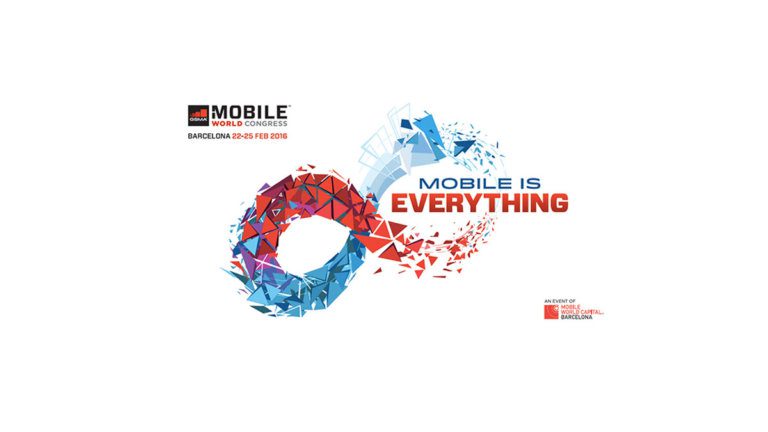
I set myself the almost impossible challenge of elaborating on only three takeaways from the CableLabs member tour of MWC 2016.
First -
After more than six years from the introduction of 4G LTE, there are still major improvements to be made in speed. I saw 1 Gbps demonstrated with three carrier aggregation (20 MHz) and 4x4 MIMO in a smart phone. It is now possible to integrate four antennas into large form factor smart phones (particularly at higher mobile frequencies such as 3.5GHz where the wavelength is smaller). While in a real world situation of a fully loaded cell, this 1Gbps probably translates into user speeds of between 60 -100 Mbps and nevertheless represents speeds that are "good enough" for people who use only 10 Gbytes a month. Even a single carrier of 20 MHz can achieve circa 370 Mbps in a cell, which again probably translates to a real world speed of 22-37 Mbps per user. This is between 2-3x today's US average of the two faster LTE networks (12 Mbps). LTE is likely to be the basis of the future 5G network for the marco/micro cellular layers.
Second -
The second takeaway is how impressive 5G millimetric wave-band technology has become in just a few years from Professor Ted Rappaport's ground breaking characterization of a New York street small cell (CableLabs in its 5G research supports Ted's research center). Millimeter Wave allows us to liberate circa x25 the bandwidth currently used for mobile today, albeit in only small cells with radiuses of typically between 150-300m. This technology uses massive phase arrays of antennas, such as 512x512 MIMO demonstrated by Ericsson, which are possible because of the smaller wavelength of mm Wave compared with today's mobile. These steer pencil-like beams to individual users as they move around the small cell. The real challenge now is the cost reduction. However, it does mean that in 5G there will be a massive disparity between small cell bandwidths, with typically multi 10gbps per user, and the 5G macro/micro cellular layers with say a 100 Mbps. The evolving use cases will be key to the volume and hence potential cost reduction. Massive take up in cities would drive the case for fiber local loops in order to supply this demand! While the 1mS latency requirement in 5G is intriguing for new use cases, it alone could drive fixed-mobile convergence. All good news for cable. Find out more at the CableLabs Inform[ED] Wireless Conference in New York on April 13.
Third and Finally -
3.5 GHz shared access is rapidly progressing. With up to 150 MHz of free mobile spectrum, this is a godsend to fixed operators or MSO/MNOs who need to grow their wireless capacity of x1000 over the next decade. It supports 3GPP band 42&43 handsets, which will begin to become available in Asia later this year. Many companies such as Google are working hard to exploit 3.5GHz. This activity should help drive the development and deployment for handsets. The Wireless Innovation Forum, which CableLabs is a member, is driving 3.5 GHz shared access in the US. The rest of the world is watching us for this new model of spectrum use. There are great opportunities here for MSOs - the dawn of the age of the micro-mobile operator. Not to mention, there is great potential for MNO offload with neutral LTE spectrum!
And what for MWC 2017? Higher mobile speeds and early 5G deployments?
News
Impressions From Mobile World Congress

When I last left you at the end of my first day at Mobile World Congress, I had carried out a scouting tour.
We started Tuesday morning with four excellent presentations:
- From Qualcomm: Eduardo Esteves, VP of Product Management at Qualcomm, presented their silicon IC strategy. Their technology is at the heart of most of the world’s smart phones and wireless systems. Eduardo covered key developments in LTE-U, LAA and LWA which all use the 5GHz unlicensed spectrum with an anchor mobile carrier to carry the signalling traffic. This of course prevents a fixed operators from using any of these 3GPP mobile technologies. While both LAA and LWA use “listen before talk” which is a “good neighbor” to WiFi, LTE-U’s co-existence with WiFi is the subject of much debate where CableLabs represents the members’ interests here with the WFA. Clearly, Qualcomm’s new strategy is to develop new technologies which help fixed operators now with mobile technologies such as MuLTEfire, which uses LBT, and integrates the “LTE protocol,” without an anchor mobile carrier into the 5GHz band for smart phone use. This represents another major opportunity for MSOs for entry into mobile plays besides 3.5 GHz. The key here is the support from Qualcomm to help make this technology available in future handsets. In the afternoon, they launched the MuLTEfire alliance with key members such as Ruckus, Nokia and Intel. Qualcomm is also developing silicon in an alliance with Ruckus and Intel for 3.5GHz shared access with a range of strategic partners including Baicell, Google, Ruckus, and Netgear using USB dongle reference designs. See photograph below, where the white dongle is the 3.5 GHz eNodeB:
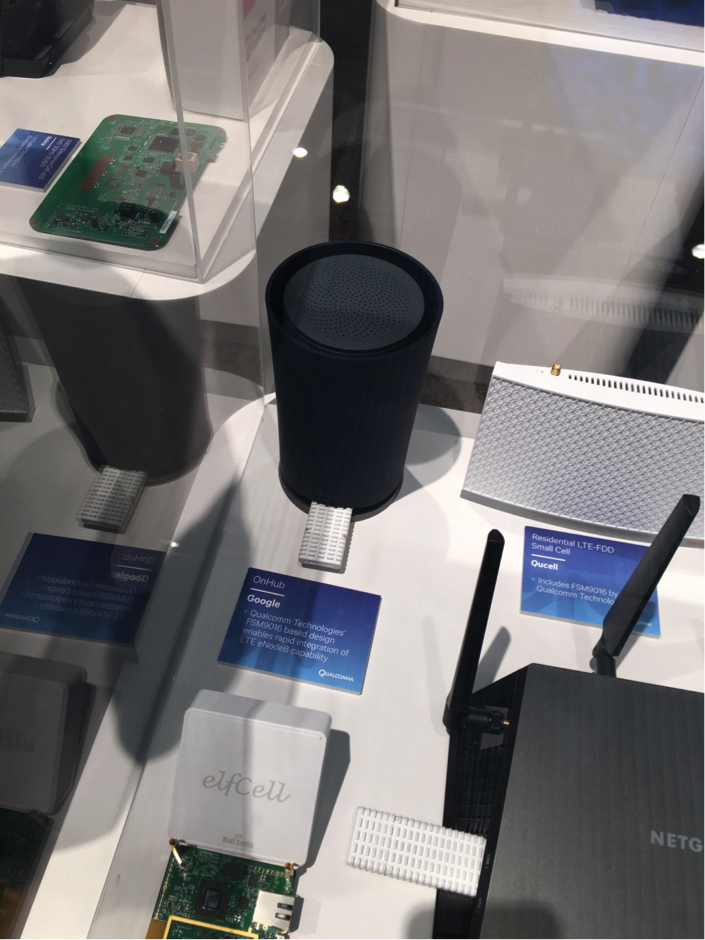
This demonstration shows how easy it to turn an existing device into a mobile base station.
Personally I find this photograph as one of the most important finds at MWC! It shows how fast technology can enable new business opportunities and models for fixed operators - The beginning of “micro-mobile operators.” Applications here are probably only 3+ years from commercialization.
2) From New Street Research: Spencer Kurn who is a founding partner of New Street Research presented a bullish strategy for the opportunities for the United States based MSOs in mobile which included both retail strategies and a wholesale play.
3) From Kumu: Joel Brand who is Vice President of Product Management presented the wireless equivalent of Full Duplex DOCSIS® technology based on original Stanford University research. They can double the capacity of mobile spectrum by implementing a complex algorithm that allows radios to both talk and listen at the same time using techniques similar to noise cancellation in headphones. It was great to see how this original research has lead to two key acheivements recently in both the cable and wireless domains for full duplex.
4) From Orange: David Baillergeau, who is head of Orange TV content strategy presented their plans around VR content and opportunities for next generation TV. This at a time where many vendors at MWC 2016 were demonstrating VR technologies. Our tour in the afternoon ended on the Samsung VR rollercoaster. Having recently been to Universal Studios, I found this VR simulation to be so close to the real thing that I was truly terrified!
The afternoon guided tour of MWC included visits to Qualcomm, Ericsson Huawei, Vodafone and Samsung. The first three majored on the consistent story of the march of mobile technologies from today’s 4G LTE toward 5G with aspirational 1Gbps speed in a cell to 10Gbps in millimetre 5G small cells as described yesterday.
Vodafone presented some very interesting applications of mobile technologies. I particularly liked how you can share a good 4G connection with your nearby neighbors who are in poorer reception by using a WiFi relay system. Vodafone uses an app you can download which does not affect your data allowance. They also extended this concept to the use of TDD spectrum for use in car mobile hot spots. The European 3G spectrum auctions of FDD spectrum also included a small amount of TDD. Modern smartphones now support these bands so why not use this ”free” TDD spectrum?
The tour ended at Samsung where we were shown the latest mobile devices which include the new Samsung Galaxy S7. Having been a life long Apple fan, I observed that Samsung may be winning the technology battle in almost every facet from the screen, to the camera, to waterproofing, to battery and applications. Their Samsung Pay looks remarkably like Apple Pay!
WiGIG (802.11ad)
While focused on mobile technologies, many vendors such as Qualcomm and Intel were demonstrating WiGIG (802.11ad) which uses 60GHz millimeter wave technologies for short range transfers. It can achieve reliable download speeds of 3-4x faster than 802.11ac with the exhibitor demonstrating real transfers of HD content speeds of over 2 Gbps through wooden walls.
And finally:
One last thing I achieved at MWC 2016 is fitness. I walked miles to see all the technologies in eight different halls each of which could house the whole US CTIA mobile show. I am looking forward to Day Three where the members will enjoy a session with the start-ups we identified. Scott Brown will cover the Up Ramp™ Fiterator™ accelerator while I have arranged a number of strategic vendors meetings in the mobile space for CableLabs’ mobile innovation strategy. Best keep that a secret for now!
News
First Impressions of the Mobile World Congress in Barcelona

CableLabs is hosting its first tour of Mobile World Congress (MWC) here in Barcelona, Spain. The MWC is the World’s largest mobile congress with attendance likely to top over one hundred thousand people from two hundred countries. It’s the place to be seen in the mobile world, which today is more than about handsets and networks. All the largest companies in telecom are here making major announcements.
I began the day scouting with the team to make sure that our tour would visit the best companies and technologies. It was an amazing day of observing technological breakthroughs that I would like to share.
1GBps Mobile
Let’s first discuss speed. Many of the world's largest telecom vendors are presenting LTE technologies that will enable 1Gbps to your mobile phone - -that is if you are the only user in a cell close to the base station. To achieve these speeds, the headsets will need four antennas integrated into them. This is now possible with frequencies as low as 2.1 GHz in order to achieve 4x4 MIMO. It also means that you need to combine 3 mobile carriers with 256 QAM. What does that mean in a real world situation in a few years’ time? Well, the average speed today of LTE in the US of circa 10 MBps and these new technologies will take this to circa 60Mbps in a few years time with all the associated improvements in cellular backhaul. Qualcomm is making all this technology available in their new X16 Chip, which is being used by companies such as Ericsson, Nokia, Huawei and the rest - all here at MWC.
5G
5G is based on the evolution of LTE with the use of millimeter waves to extend frequency operation of today’s wireless systems from sub-6GHz to 100GHz. Ericsson was demonstrating a 15GHz system with an 800Mhz channel bandwidth to support users with up to 20Gbps. Because of the smaller physical size of antennas at these millimeter wave frequencies, it is possible to build arrays of these for 256x256 MIMO and to steer these pencil-like beams to individual users. There are expectations of commercialization of this type of technology as early as 2020.
5G - IoT
5G is more than about speed. The evolution of LTE will support the aggregation of small channels for massive IoT applications which require relatively small bandwidths.
5G - 1mS Latency
One of the most exciting aspects of 5G is the requirement to support 1mS latency. Today’s mobile networks have latency of typically 60-100mS. Why is this new requirement important? The distance from the touch of an object to the sensation in your brain is approximately 1mS. With this target of low latency, it would be possible for people to see and react to events in real-time for critical control operations. Real-time control of cars driving at high speed would be possible across networks with no traffic lights!
It is not all 5G – WiFi 802.11ax
Qualcomm was demonstrating 802.11ax pre-standard WiFi. This takes the advances for LTE technology to WiFi to support multi-users in complex environments such as offices to maintain speeds in scheduled applications.
LTE coming to WiFi soon - MuLTEfire
Qualcomm is developing a new technology called MuLTEfire which will support LTE in the 5GHz WiFi with Listen Before Talk (LBT) as a good neighbor to WiFi. MSOs could then support LTE based services without the need of an anchor mobile carrier. Qualcomm has formed the MuLTEfire alliance for likeminded members to exploit LTE in the WiFi bands. Today this includes companies such as Intel and Ruckus.
3.5GHz mobile is on its way
The FCC is opening the 3.55-3,7GHz (LTE bands 42 and 43) within the next few years. People will be able to access up to 150MHz of free mobile spectrum for small cells. Qualcomm has formed an alliance with Ruckus to demonstrate a 3.5GHz LTE small cell base station in a dongle connected into what looked like a Google OnHub. 3.5GHz presents great opportunities for CableLabs MSO members seeking to become mobile operators.
And finally:
If you told me as little as a few years ago that anyone could become a mobile operator in the near future, enjoying free spectrum with a base station on a dongle and a package core network on a laptop, or virtualized in the cloud, I would have not believed you. What I saw at MWC on the first day makes me feel that this well be real within the next 3+ years! CableLabs is uniquely positioned to work with our Members, some of who are gathered here, to drive innovation to make this happen.



